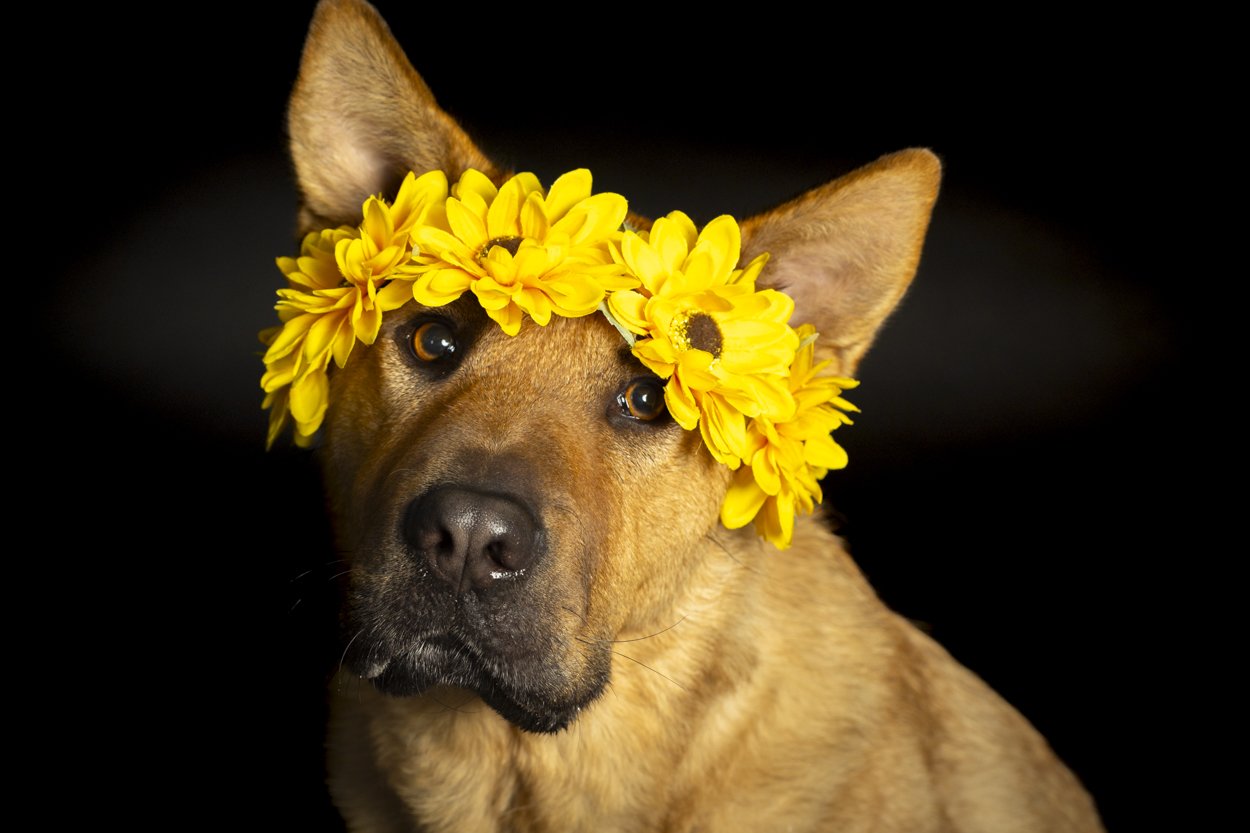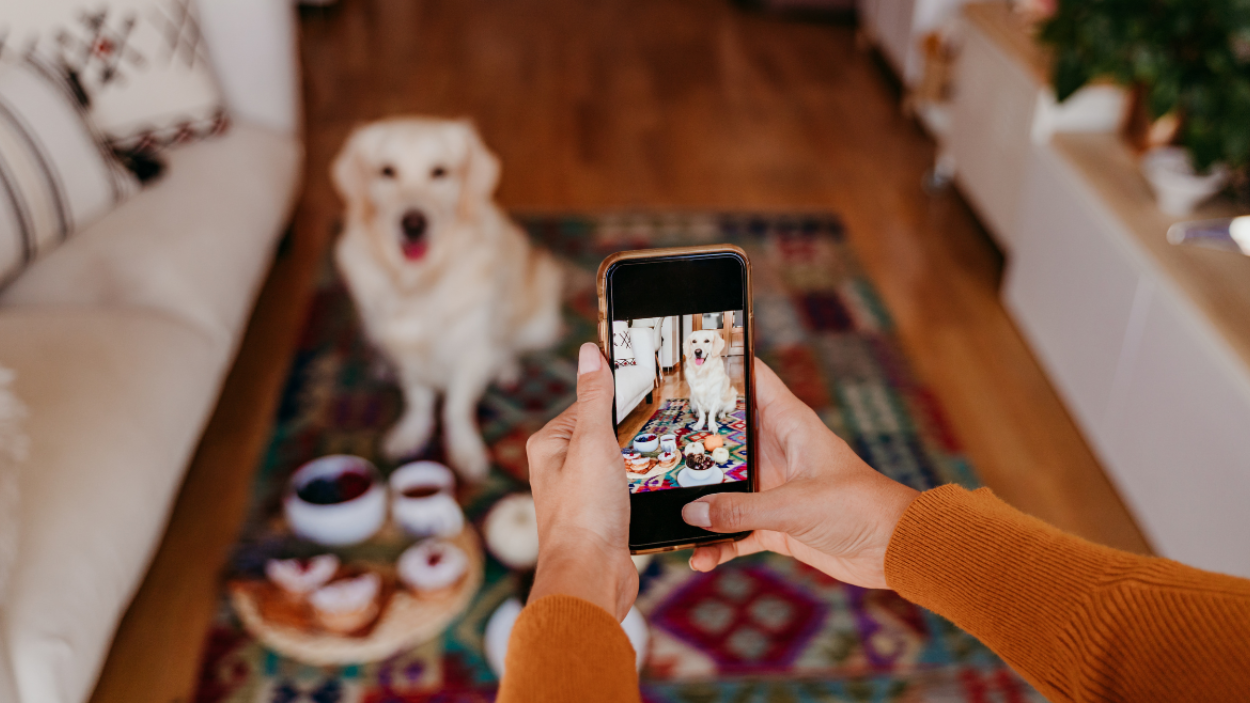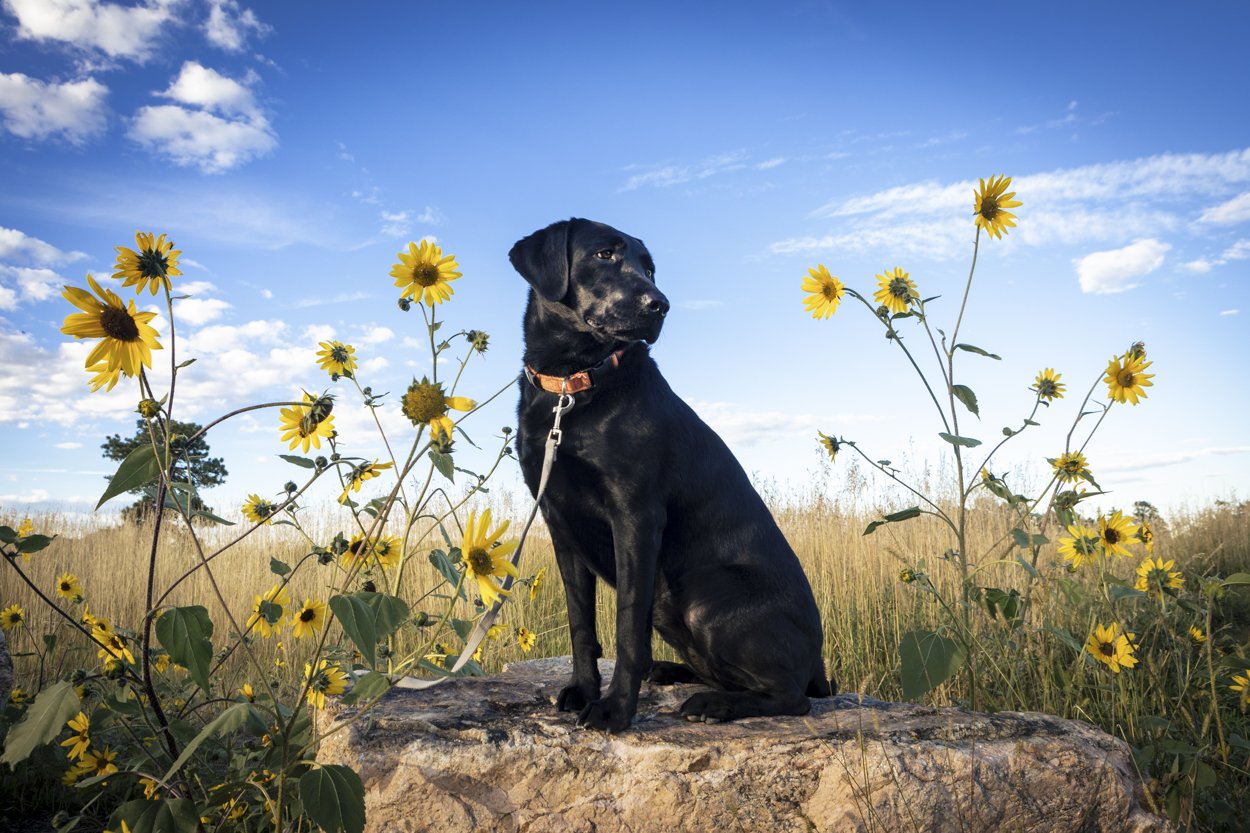Capture the Perfect Pet Photo: Tips and Tricks
Taking photos of your beloved pet can be a delightful and rewarding experience. Whether you want to create lasting memories or showcase your furry friend's adorable antics, capturing the perfect pet photo requires skill and a keen understanding of your pet's unique personality. In this article, we will explore various tips and tricks to help you elevate your pet photography game to the next level.
Also read:
Framing Pet Pictures: Tips for Showcasing Your Furry Friend
Understanding Your Pet's Personality
Every pet is unique, and understanding their personality is key to capturing their essence in a photograph. Take the time to observe their behavior and mannerisms. Are they playful and energetic or calm and composed? Recognizing these traits will help you plan the perfect photo shoot that showcases your pet's true character.
When it comes to understanding your pet's personality, it's important to consider their likes and dislikes. Just like humans, pets have preferences and interests that can greatly influence their behavior. For example, some cats may be more inclined to explore and climb, while others prefer to curl up in a cozy spot. By paying attention to these preferences, you can create a photo shoot environment that your pet will feel comfortable and happy in.
Another aspect to consider when understanding your pet's personality is their social behavior. Some pets thrive in the company of others, enjoying playdates and social interactions, while others prefer solitude and quiet moments. By taking note of your pet's social tendencies, you can tailor your photo shoot to suit their needs. For social pets, consider incorporating other animals or even family members into the shoot to capture their joyful interactions. For more introverted pets, create a calm and peaceful environment that allows them to relax and express their true nature.
Decoding Your Pet's Moods
Pets, just like humans, have different moods that can leave a lasting impact on their photographs. Keep an eye out for those moments of pure joy or deep contemplation. Capturing these emotions will add depth and personality to your pet photos. Remember, the eyes are the windows to the soul, so focus on capturing expressive eyes that tell a story.
Understanding your pet's moods requires patience and attentiveness. Pay attention to their body language and facial expressions. Is their tail wagging excitedly or tucked between their legs? Are their ears perked up or flattened against their head? These subtle cues can reveal a lot about your pet's current mood and emotions. By being attuned to these signals, you can capture photographs that truly reflect the unique personality of your pet in that moment.
It's also important to consider the environment and context in which you are photographing your pet. Different settings can evoke different moods and emotions. For example, photographing your dog running freely in a wide-open field may capture their sense of freedom and joy, while capturing your cat lounging peacefully by a sunny window may convey a sense of tranquility and contentment. By choosing the right setting and moment, you can enhance the mood of your pet's photographs and create images that resonate with viewers.
Identifying Your Pet's Unique Traits
Every pet has distinct features that make them special. Whether it's a quirky birthmark, a mischievous smile, or a graceful stance, spend time discovering and highlighting these unique traits in your photographs. These subtle details will make your pet's photos stand out and truly reflect their individuality.
When identifying your pet's unique traits, it's important to pay attention to both their physical characteristics and their personality quirks. Is your dog known for their adorable head tilt or your cat for their playful pounce? These distinctive behaviors can become signature elements in your pet's photographs, adding a touch of personality and charm.
Additionally, consider the background and props you use in your pet's photo shoot. Incorporating elements that complement your pet's unique traits can further enhance their individuality. For example, if your pet loves playing with a specific toy, include it in the photoshoot to capture their playful nature. If your pet has a favorite spot in the house, photograph them in that familiar environment to showcase their comfort and sense of belonging.
Remember, the goal is to capture your pet's true essence in the photographs. By understanding their personality, decoding their moods, and identifying their unique traits, you can create a collection of images that not only reflect their individuality but also evoke an emotional connection with viewers.
Setting Up the Perfect Photo Shoot
Now that you understand your pet's personality, it's time to plan a photo shoot that brings out the best in them. Consider the following factors:
Choosing the Right Location
Selecting the perfect location for your pet's photo shoot is essential to capturing their unique personality. It's important to choose a setting that complements your pet's energy level and temperament. For playful and energetic pets, an expansive park or beach will provide ample space for them to roam freely and showcase their lively nature. The vibrant colors of nature will serve as a beautiful backdrop for their vibrant personality.
Also Read:
Top 4 Places in Denver Area for Pet Photography
On the other hand, if your pet is calm and composed, they might feel more at ease in a quiet garden or a cozy corner of your home. These serene environments will create a peaceful atmosphere, allowing your pet to relax and showcase their natural grace and elegance. The soft lighting and tranquil surroundings will enhance their beauty and create a sense of tranquility in the photographs.
Selecting the Ideal Time
Timing is everything when it comes to pet photography. The right lighting can make all the difference in capturing stunning photos of your furry friend. To achieve the best results, it's recommended to shoot during the golden hours – the hour after sunrise and the hour before sunset. During these times of day, the light is soft, warm, and flattering, creating a magical atmosphere that enhances the natural beauty of your pet.
When choosing the ideal time for your pet's photo shoot, it's essential to consider their routine and behavior. Think about when your pet is most likely to be calm and cooperative. For some pets, early mornings may be the perfect time as they are well-rested and full of energy. Others may be more relaxed and attentive during the peaceful evenings. By aligning the photo shoot with your pet's natural rhythm, you'll increase the chances of capturing their true essence in the photographs.
Remember, patience is key when photographing pets. Take the time to observe your pet's behavior and adjust your plans accordingly. By selecting the right location and timing, you'll create a comfortable and relaxed atmosphere for your pet, allowing their unique personality to shine through in the photographs.
Top 4 Places in Denver Area for Pet Photography
Essential Photography Equipment for Pet Photos
To capture stunning pet photos, you don't necessarily need the most expensive gear. However, having the right equipment can significantly enhance your results. Consider the following:
When it comes to photographing your furry friends, there are a few essential pieces of equipment that can take your pet photography to the next level. Whether you're a professional photographer or just an enthusiast, these tools will help you capture those precious moments with your pets in the best possible way.
Camera Options for Pet Photography
While smartphones can produce decent pet photos, investing in a DSLR or mirrorless camera will give you more control over settings and allow you to capture sharp, high-quality images. The ability to adjust shutter speed, aperture, and ISO settings can make a world of difference when it comes to capturing fast-moving pets or shooting in low-light conditions.
Furthermore, having a camera with interchangeable lenses gives you the flexibility to experiment with different focal lengths and achieve a desired effect. For example, using a telephoto lens can help you capture close-up shots of your pet's expressive eyes, while a wide-angle lens can capture the full scene and showcase your pet's environment.
When selecting a camera for pet photography, consider factors such as autofocus performance, burst shooting speed, and overall image quality. These features will help you freeze the perfect moment and ensure that your pet's unique personality shines through in every shot.
Importance of Lighting and Reflectors
Proper lighting can make or break a pet photo. Natural light is ideal, as it creates a soft and flattering illumination that brings out the natural colors and textures of your pet's fur. When shooting outdoors, take advantage of the golden hour—the period shortly after sunrise or before sunset—when the light is warm and diffused.
However, if you find yourself shooting indoors or in less-than-ideal lighting conditions, it's essential to have control over the lighting setup. Soft, diffused lighting is key to avoid harsh shadows and create a more pleasing aesthetic. Consider investing in a portable lighting kit with adjustable brightness and color temperature to ensure consistent and professional-looking results.
Reflectors are another valuable tool in your pet photography arsenal. These simple yet effective accessories can bounce and manipulate light, enhancing your pet's features and adding dimension to the photograph. Reflectors come in various shapes and sizes, and they can be used to fill in shadows, create catchlights in your pet's eyes, or even redirect sunlight to create interesting patterns and textures.
Experimenting with different lighting setups and reflector positions will allow you to create a wide range of moods and styles in your pet photos. Whether you're going for a dramatic, high-contrast look or a soft and dreamy ambiance, understanding how light interacts with your subject will help you achieve your desired results.
Mastering the Art of Pet Photography
Now that you have set the stage and gathered your equipment, it's time to focus on capturing breathtaking pet photos. Pay attention to the following techniques:
Techniques for Capturing Action Shots
Pets can be full of energy, so capturing them in motion can result in lively and dynamic photographs. Utilize burst mode and a fast shutter speed to freeze the action, and get down to your pet's eye level for a unique perspective. Experiment with different angles and compositions to add a sense of excitement to your photos.
Imagine the thrill of capturing your dog mid-jump as they catch a frisbee in mid-air. The sheer joy and determination in their eyes, the wind ruffling their fur, and the anticipation of the catch all frozen in a single frame. Action shots like these not only showcase your pet's agility but also bring a sense of energy and movement to your photographs.
When photographing cats, you might find yourself chasing them around the house as they dart from one corner to another. Their graceful leaps and lightning-fast reflexes can make for stunning action shots. By using burst mode and a fast shutter speed, you can freeze their mid-air acrobatics, capturing their elegance and agility in a way that is sure to impress.
Tips for Getting Your Pet's Attention
Getting your pet's attention is essential for creating engaging photographs. Use their favorite toys or treats to grab their focus and direct their gaze towards the camera. Develop a language of cues and rewards that elicit the desired response, ensuring that your pet remains interested and engaged throughout the photo shoot.
Imagine the challenge of photographing a curious and playful kitten. Their attention span is short, and they can easily get distracted by anything that moves. To capture their adorable antics, you need to be armed with their favorite toy or treat. By enticing them with something they love, you can ensure they stay focused on you and the camera, resulting in captivating photos that showcase their playful personality.
When photographing dogs, it's important to establish a connection and build trust. Spend some time bonding with your furry friend before the photo shoot, engaging in activities they enjoy. By creating a positive association with the camera, you can capture their attention and genuine expressions. Whether it's a wagging tail, a perked-up ear, or a soulful gaze, these small details can make a world of difference in your pet portraits.
Post-Processing Your Pet Photos
Even the best photographers rely on post-processing to refine their pet photos further. Consider these basic editing techniques:
Basic Editing Techniques
Start by adjusting the exposure and contrast to enhance the overall image. Fine-tune the colors to accurately represent your pet's coat or feathers. Sharpen the image slightly to bring out the details, and crop the photo to create a balanced composition. Remember, post-processing should aim to enhance the photo while maintaining its natural look.
Advanced Editing for Pet Photos
For those seeking to delve deeper into editing, consider exploring advanced techniques such as dodging and burning to draw attention to specific areas of your pet's photograph. Experiment with different filters or presets to create a unique style that reflects your pet's individuality. Remember to maintain a balance and avoid over-editing, which can result in an unnatural appearance.
By understanding your pet's personality, planning a well-thought-out photo shoot, using the right equipment and techniques, and post-processing with care, you can capture the perfect pet photo that showcases your furry friend at their best. So grab your camera, unleash your creativity, and get ready to freeze moments that you'll cherish for a lifetime.






